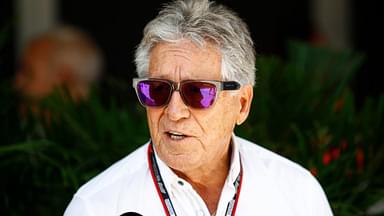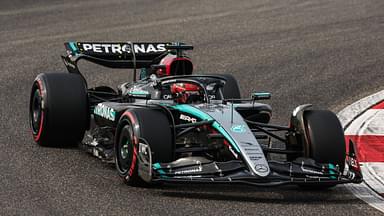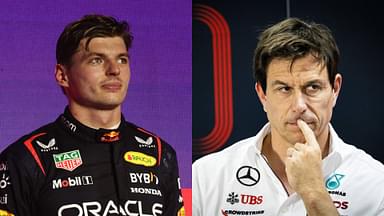F1 cars are an intricate piece of engineering and can cost a lot. While they can go extremely fast, there are a lot of advanced engineering and technical aspects behind their speed and efficiency. According to USA Today, an F1 car can cost between $12 to $15 million. Of course, this amount can vary on the overall setup and parts in the car.
Usually, an F1 car for a Grand Prix has several parts for its complete setup. It involved both the front and rear wings, the steering wheel (which is unique for a race car), the power unit (including the internal combustion engine), and other elements such as the battery and turbocharger.
The cost of an F1 engine can be around $10.6 million. The engine and PU alone reportedly cost the most among all parts of an F1 car. Meanwhile, a set of wings cost around $200,000, and the steering at $50,000. According to Red Bull, this can boost the cost of an F1 car to about $15.9 million.
Can you buy an F1 car?
One cannot buy a modern-day real F1 car that has raced on track. However, there are show cars that usually are available on platforms such as F1 Authentics. These show cars come at a price of around $119,300 and can go up to $150,000 approximately.
Naturally, this car won’t have any engine or transmission like a real car, given it is only for exhibition. But from the looks of the show car, it more or less matches the original. The livery and the outer build of the chassis will be the main points of attraction in such a show car.
Still, if one wants to buy a complete F1 car that can be driven and raced, they have to pay the price for it. Such cars are usually pieces of F1 memorabilia and often include old iconic cars driven by legendary champions.
From Michael Schumacher’s championship-winning Ferraris to Ayrton Senna’s all-conquering McLaren MP4/4, the cost for such cars can go up to $7 million or even higher.
What is the most expensive F1 car?
Often auctions happen for the sale of both classic and modern F1 cars. The most expensive F1 car that was sold at an auction was a classic car from the 1950s. It was the championship-winning car of Juan Manuel Fangio from 1954 – the Mercedes Benz W196.
The record price of Fangio’s Mercedes was roughly around $31 million. Even modern F1 cars that have gotten buyers in recent times have not fetched so much money. Lewis Hamilton’s first Mercedes car, the W04, became the most expensive modern-day F1 car in November 2023 in an auction in Las Vegas.
Hamilton’s 2013 Mercedes went for a staggering $18.8 million. This sale broke the record that Michael Schumacher’s 2003 championship-winning Ferrari held. Schumacher’s Ferrari was sold for $14.9 million over a year ago.
RM Sotheby, who conducted the auction, had anticipated a price estimate of about $10 to $15 million for Hamilton‘s car. Certainly, the seven-time champion’s allure may have given it the premium to go at $3 million higher than expected.
How quick is an F1 car?
Speed is just one of the reasons why F1 is called the pinnacle of motorsport. However, that is at times enough to lure audiences as watching an F1 car blast past at full speed is quite the spectacle.
It can be blinding to spot the car when a driver is going full throttle, as he reaches speeds of over 220 mph. Valtteri Bottas holds the official fastest speed record in an F1 car when he touched 378 kph (234.8 mph) at the 2016 European GP practice in Baku.
Meanwhile, the fastest speed recorded in a race was at the Temple of Speed in Monza. It was the 2005 Italian GP, where Juan Pablo Montoya touched 372.6 kph (231.5 mph) in his McLaren MP4-20.
How much can teams spend on their cars currently? Was there a cap previously?
F1 teams now follow a budget cap to limit their expenses on building and operating their cars over a season. The FIA introduced this budget cap of $145 million for the 2021 season for the first time. Since then, this cap has been reduced to $140 million in 2022 and $135 million in 2023, and will stay at this amount till 2025.
The FIA implemented this to bridge the gap between the bottom half and the top teams, who could spend a lot of money to gain performance, given their financial ability. The top sides mainly involved teams like Mercedes, Ferrari, and Red Bull. At times, these teams reportedly even spent over $300 to $400 million in a season.
Meanwhile, smaller teams like Williams, Haas, and Sauber did not have that much investment and financial backing to splurge on development and catch up with the top outfits. Thus, to level the playing field, the budget cap came into play.
Naturally, this cap only involves expenses and costs for the development of the car and all operations of the team. However, there are certain exemptions to the cap that involve some high-paying expenses such as drivers’ salaries.
Even salaries of the top three highest-earning members of the team are exempt from the cost cap. Similarly, travel costs, marketing expenses, entry and license fees, employee bonuses, etc. are exempt for teams under the budget cap. However, all manufacturing of parts, testing, simulation, and car development costs come under the scrutiny of the FIA.







